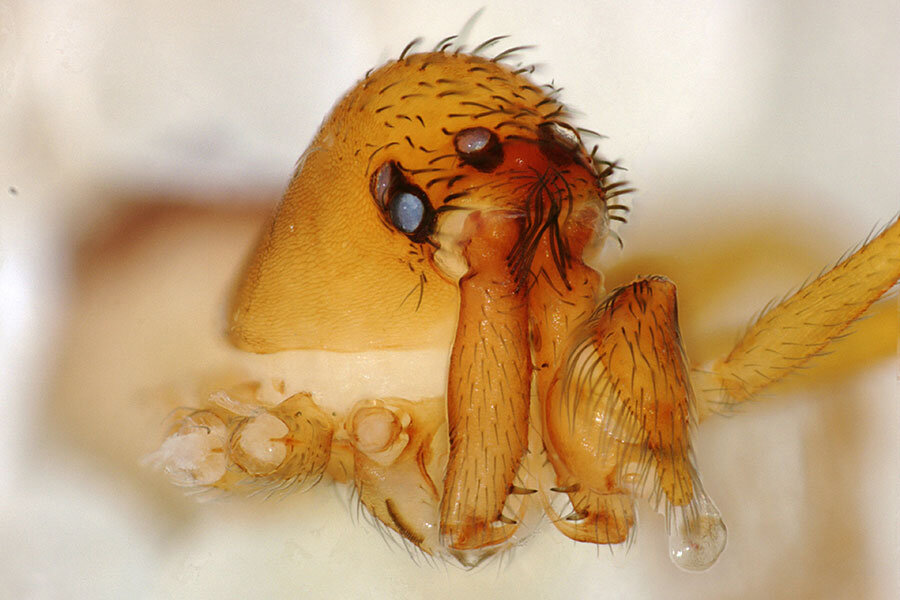Scientists describe spiders that ensnare prey with lightning fast jaws
Loading...
A newly identified group of tiny spiders catches prey in a way never before seen in this order of arachnids – by snapping their jaws shut at lightning speeds.
Trap-jaw spiders, as this hardy group is known, are just one part of a superfamily that has a strange and unusual head anatomy that evolved, in the case of the trap-jaws, to ensnare their prey.
Among the trap-jaw species, as a study published Thursday in the journal Current Biology explores, the explosive action has evolved independently along four different lines, raising questions as to how such an innovative adaptation came to be.
“Let’s say we have a little spider specimen, they’re just hanging out and then they detect some potential prey, they detect movement,” says lead researcher Hannah Wood, a Smithsonian scientist, in a telephone interview with The Christian Science Monitor.
“They go into stalking behavior, using their first pair of legs almost like antennae, waving them around, stroking the ground with them,” she says.
“Then, when they’re in close proximity to the prey, they open their chelicerae and hold them open while they’re searching. When the prey is close enough, the chelicerae snap closed.”
These chelicerae, “highly maneuverable jaw-like mouth parts,” appear to serve different roles for different families of spiders.
Pelican spiders (so-called because their body shape makes them look like their namesake), which Dr. Wood worked with before moving on to trap-jaws, use their chelicerae to launch attacks at a distance.
But the pelican family never evolved the “power amplification” ability that allows certain species of trap-jaws, properly described as Mecysmaucheniidae, to whip their mouths shut with such startling speed.
The next step for researchers is to understand the process – to identify where and how the energy is stored before releasing in a burst of power that allows motion far faster than could be produced by mere muscles.
“Think of it like a rubber band that you pull back and then it flicks forward really fast,” explains Wood. “Somewhere, they’re storing that energy, and our next task is to find out where.”
But the creatures are cryptic. Trap-jaw spiders with prey in their mandibles have been spotted just five times in the wild – and none of those had the power-amplification ability.
All five were in the process of consuming other spiders, a trend common among the superfamily that contains trap-jaws, pelicans, and three other families. Two of the five families feed exclusively on other spiders.
But in the lab, the bigger, slower trap-jaw spiders have happily eaten flies and myriad other things, whereas Wood could only convince the ones with power amplification to feed on springtails – a kind of arthropod that propels itself from the ground at high speed.
This suggests the intriguing possibility that those trap-jaw spiders with the ability to slam their jaws shut at high velocity have evolved to target fast-moving prey.
“This study shows how little we know about spiders – and all arthropods,” Wood tells the Monitor.
“So much research focuses on a small number of animals," she says. "In arachnology, we’re still struggling to even get all the species described.”








